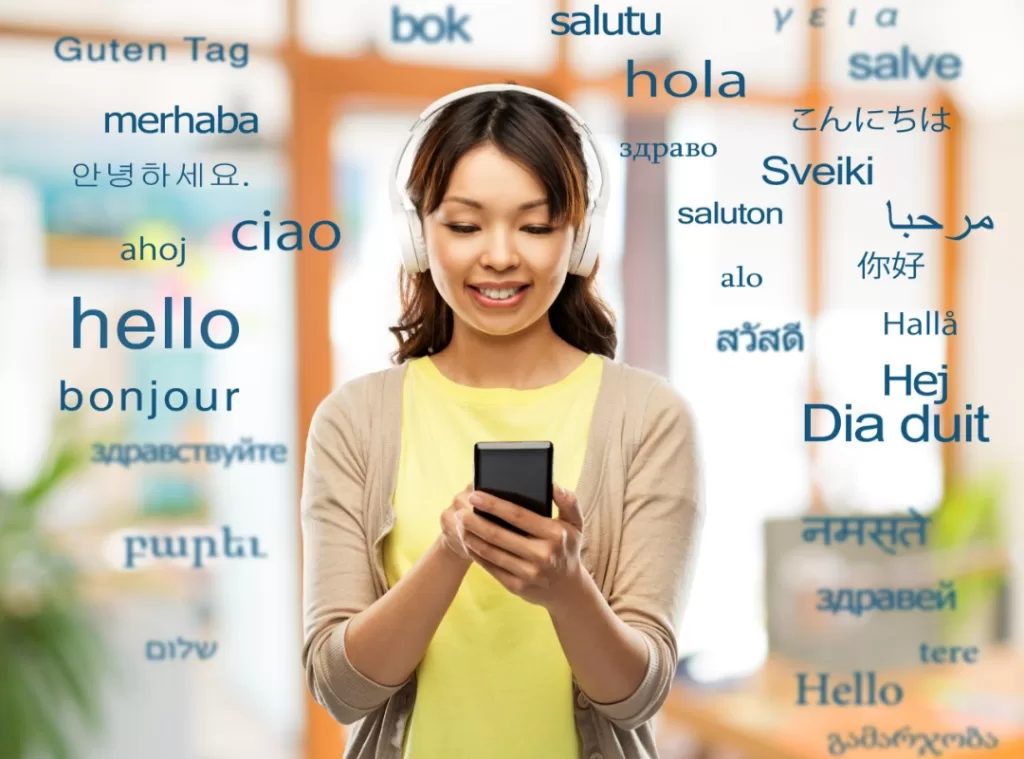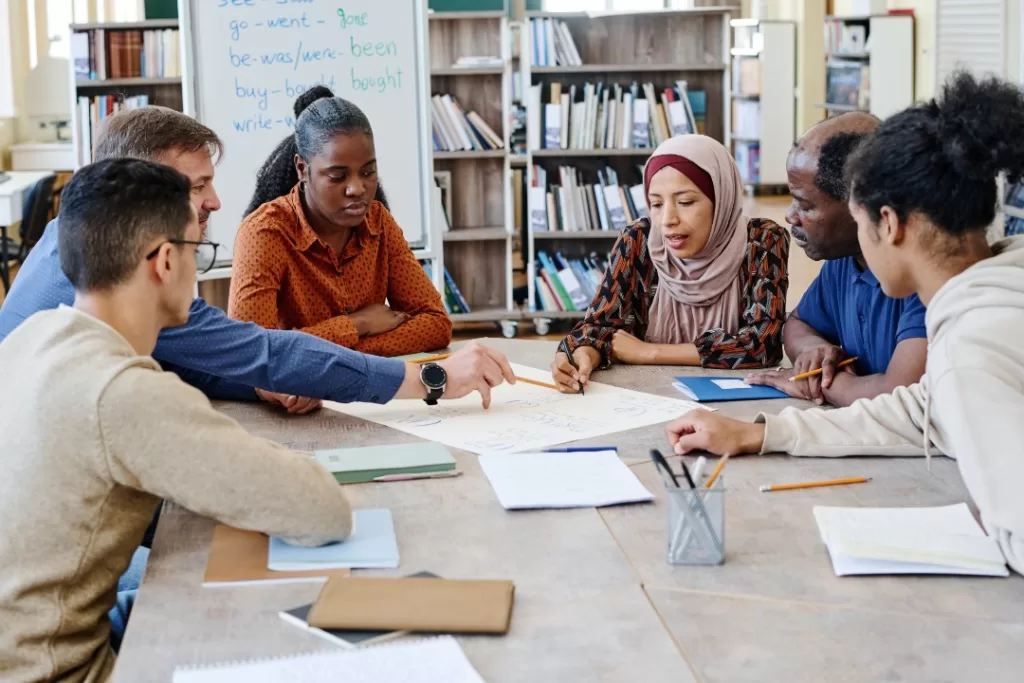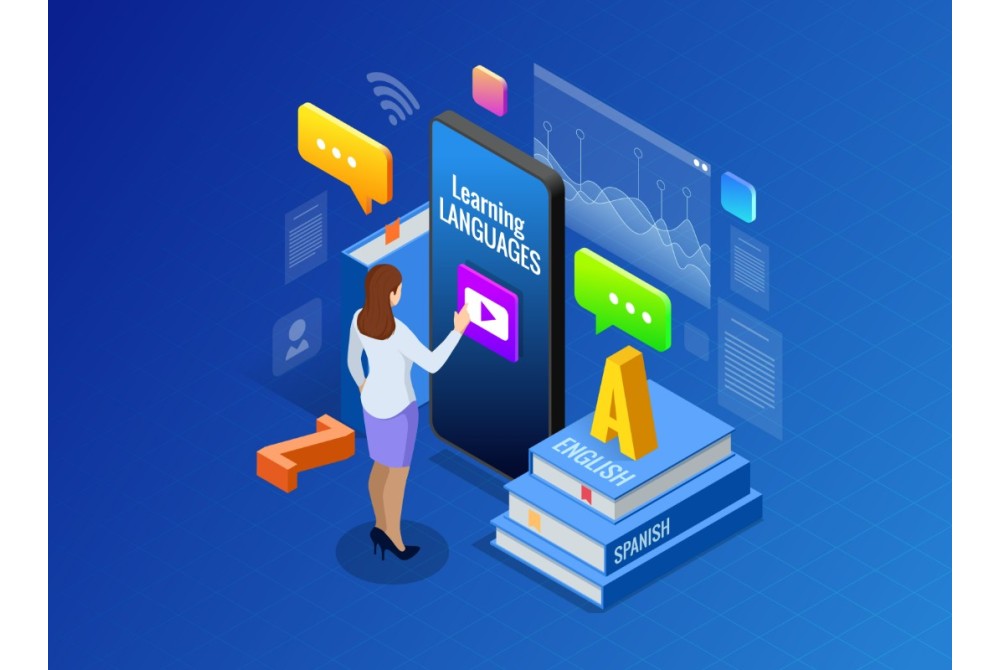Language learning typically occurs in classrooms, with in-person lessons being the norm. This then advanced to virtual classrooms, utilising video conferencing tools/platforms, which offer a similar feel to in-person lessons without commuting to the same location.
However, it often seems like apps can do just about anything, whether ordering your favourite food or keeping you connected with friends on social media – all with a simple swipe and tap of your thumbs. This technological progress [1] has significantly changed how we approach language learning, making it more accessible. You can now dive into a new language at your convenience, anywhere you please.
This brings us to a critical question: are language learning apps replacing how we learn a new language?
Each of these methods has its advantages and drawbacks. Language learning can be challenging, especially when you’re unsure where to begin. Your unique learning style and preferences play a crucial role in the process. Discovering which method aligns with your strengths is key to a successful language-learning experience.

Technology has made learning a new language quick and accessible.
The advantages of language learning apps
Language-learning apps have plenty of merits to bring to the table and can significantly enhance your language-learning experience.
- Convenience at your fingertips: with language learning apps, you have the flexibility to learn whenever and wherever you want. Whether on public transportation, at home, or waiting in line, your language lessons are just a tap away.
- Gamification and motivation: these apps make learning fun by turning it into a game [2]. Challenges, rewards, and interactive elements keep you motivated and excited about your progress.
- Targeted skill building: language apps allow you to focus on specific language skills. Whether you want to improve your grammar, pronunciation, or vocabulary, you can choose exercises tailored to your needs.
- Instant feedback and assessment: one of the standout features is the immediate feedback you receive. You can practice speaking while the app evaluates your pronunciation. With instant assessments to gauge your progress, you may be encouraged to continue learning as you can identify areas that need more attention.
- Real-life practice: language apps create scenarios that mimic real-life language use. This means you get to practice in contexts you’d encounter in actual conversations, making your language skills more practical and applicable.
- Personalised learning: these apps adapt to your learning style and pace, ensuring you’re continuously challenged at the right level. Whether you’re a beginner or looking to advance your fluency, language learning apps can be invaluable in your language-learning journey.

Language learning is now more accessible than ever.
The role of traditional methods in language learning
Despite the benefits you can reap from language learning apps, traditional methods of language learning play a crucial role in your language education journey, offering unique advantages that complement modern approaches.
In a traditional classroom setting, experienced teachers provide direct guidance. Like language learning apps, this human connection also allows for real-time feedback, with the added benefits of social interaction and a supportive learning environment. Interacting with a knowledgeable instructor [3] can address specific questions and challenges, fostering a deeper understanding of the language. This can cover all facets of language learning, including listening, speaking, reading and writing, to ensure you’re equipped with a well-rounded skill set.
Additionally, traditional language courses follow a structured curriculum meticulously designed by experts. These courses establish a clear progression path, and regular classes provide built-in accountability. This can encourage students to stay committed and make consistent progress in their journey.
Unlike language learning apps, traditional methods often dive deeper into the rules of grammar and linguistic concepts. These in-depth explanations benefit learners who want a more profound understanding of a language’s intricacies and may not be available in language learning apps.
Lastly, traditional learning allows for immersion in the language’s culture. This presents an opportunity [4] to learn the language and the customs, traditions, and nuances integral to the language’s culture.

Immerse yourself in the language’s culture to better understand it.
Balancing the best of both worlds
Language learning apps, although undeniably effective [5], shouldn’t replace traditional methods entirely. They often focus on specific aspects such as vocabulary [6] and pronunciation, leaving gaps in your overall language knowledge. A comprehensive understanding of grammar, culture, and real-life use is vital for true proficiency.
However, you can maximise language learning apps and traditional methods by incorporating both approaches into your language-learning journey. Harness the structured learning, human interaction, and comprehensive understanding offered by traditional techniques while using apps for their flexibility, convenience, and quick feedback.
By fusing the advantages of both [7], you can create a rich, well-rounded learning experience tailored to your needs.
The journey of learning a new language should be just as enjoyable as conversing in it. Here at Lingo, we offer courses that suit your learning needs. Whether you prefer learning as part of a group or taking lessons online, contact us to get started!
References
- Rohrbach, J. (2018, May 10). How New Technologies Are Changing Language Learning, For Better And Worse. Retrieved from Forbes:
https://www.forbes.com/sites/forbesnycouncil/2018/05/10/how-new-technologies-are-changing-language-learning-for-better-and-worse/?sh=4cd79b36a178 - Luo, Z. (2023). The Effectiveness of Gamified Tools for Foreign Language Learning (FLL): A Systematic Review. Behavioral Sciences, doi: 10.3390/bs13040331.
- Carina Girvan, C. C. (2016). Extending experiential learning in teacher professional development. Teaching and Teacher Education, https://doi.org/10.1016/j.tate.2016.04.009.
- Kim, D. (2020). Learning Language, Learning Culture: Teaching Language to the Whole Student. ECNU Review of Education.
- Watcharapol Wiboolyasarin, N. J. (2023). Revolutionising dual language learning for young learners with the RILCA app: a mobile-assisted approach. Journal of Computers in Education.
- Poláková, P. (2022). Use of a mobile learning application in the process of foreign vocabulary learning. Procedia Computer Science, https://doi.org/10.1016/j.procs.2022.09.038.
- Trixie Mae Mengorio, R. D. (2019). The Effect of Integrating Mobile Application in Language Learning: An Experimental Study. Journal of English Teaching, 50-62.

